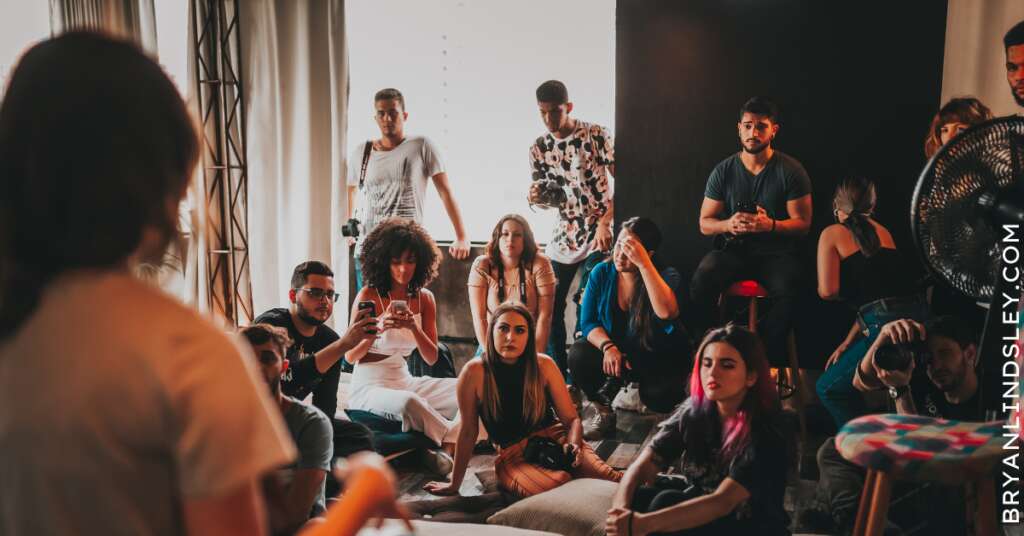When you’re trying to solve a complex social problem, you’re not just trying to change a policy – you’re building a movement.
It’s the difference between a changemaker who’s struggling to make a difference and a community that consistently makes progress.
While a clear solution proposal makes you recognizable, a movement makes you unstoppable.
Unstoppable is something to strive for.
If you’re wondering what all this “movement” talk is about, think about a legislative session.
Thousands of policies, and tens of thousands of pages of state statute, are debated and amended.
Most organizations and lobbyists join the scrum and push their policy agenda.
By the time the session ends, the policies are passed or forgotten.
Then a year goes by and the process starts again.
Changes from last year get reversed or changed.
Policies themselves are ever-changing and ephemeral.
Now compare these to movements.
The Civil Rights Movement. The Women’s Suffrage Movement. The Anti-Apartheid Movement.
These are about more than one-time changes.
They are about deeply held values, a commitment to a new vision and way of thinking.
So why does all of this matter to you, the local changemaker?
With activism becoming more saturated and hyperbolic everyday, you need to think beyond catchy slogans and utopian policies.
Your change initiative has to be more than flimsy support for a one-time policy that won’t last.
And your job is to create an ethos of making things better over the long-term.
Something people can believe in without fooling themselves.
My mission is to bring rigor and pragmatism to problem solving as an alternative to the traditional hype of virtue-signaling and utopian dreams.
Here are 4 ways I work to build my problem solving movement with my clients:
Advocate for Real People
After a couple years of sharing newsletters, I’m redoubling my advocacy that changemakers should focus on individual people living in their own local communities.
I’m not interested in debating abstract issue areas or talking about helping hypothetical groups of people.
Nor in finding the one big, nation-wide solution.
Instead, I’d rather share tips and strategies for getting to know those directly affected by the problem.
Lasting changemaking begins with real people you know by name.
See the difference?
I’ll continue to write about how to address specific issues, but always with a lens on empowering people to act in their own local communities.
Sometimes that means legislative policy and lobbying, but sometimes it doesn’t.
Dive into Your Community
People like to work with like-minded people.
And it’s unfortunate that this sometimes manifests in cliquish camps of changemakers.
They work together, lobby together, hang together.
Heck, they’ll even travel all the way to Washington, D.C. to be with those who think like they do.
But the most effective changemakers work with people who don’t think like them.
You see, it’s not about agreeing on the same big-name policy solutions.
Nor about political party.
Nor identity group.
Rather, it’s about working with others in your community – regardless of their grand visions and favorite presidential candidate – to make tangible progress on the local issues at hand.
That’s a movement I think you can feel good about getting behind.
Get to Fundamental Objectives
I know a lot of people committed to their organization.
It could be a state agency, a nonprofit or a community foundation.
But, as the social sector grows each year, it’s not enough to just be committed to a changemaking organization anymore.
You also need to be committed to achieving the mission.
Too often, I see groups of self-interested organizations failing to make progress on the issues in their community.
They spend their time promoting themselves as opposed to working on the problem.
But we should always remember: organizations are the means to achieve an end.
Without fundamental objectives, you could be “doing good work” in the social sector, but failing to make an impact in the real world.
Putting the mission first is another way to create a movement that has a sum of impact greater than what each organization can achieve on its own.
Play the Long Game
In all my time coaching, consulting and writing this newsletter, my goal has never been to deliver the solution.
To the contrary, I just want to help people to become more effective problemsolvers.
That’s my movement.
More people committed to knowing and helping the least well-off in their community.
To collaborating with neighbors who have differing viewpoints.
To prioritizing mission and community-wide effectiveness.
It’s slow, incremental work that isn’t as sexy as things you’ll see on lawn signs and bumper stickers.
But as I’ve seen in community after community, it’s the most reliable way to make progress.
Keep working on your local movement.
I know you can do it.
See you next week.
==
Whenever you’re ready, there are two ways I can help you:
→ I’m a strategic advisor for the toughest societal problems like poverty, crime and homelessness. People come to me when they want to stop spinning their wheels and get transformative, systems-level change.
→ I’m a coach for emerging and executive leaders in the social and public sectors who want to make progress on their biggest goals and challenges.
Let’s find out how I can help you become transformational.



